Mauritshuis, a palace made for Count John Maurice of Nassau in 1673, currently exhibits Dutch and Flemish artworks of master artists such as Rembrandt Van Rijn, Johannes Vermeer, Roelant Savery, Jan Steen, Peter Paul Reubens and Frans Hals. The Royal Gallery, situated within this palace in the Hague, houses the highest number of masterpieces per square meter in the Netherlands.
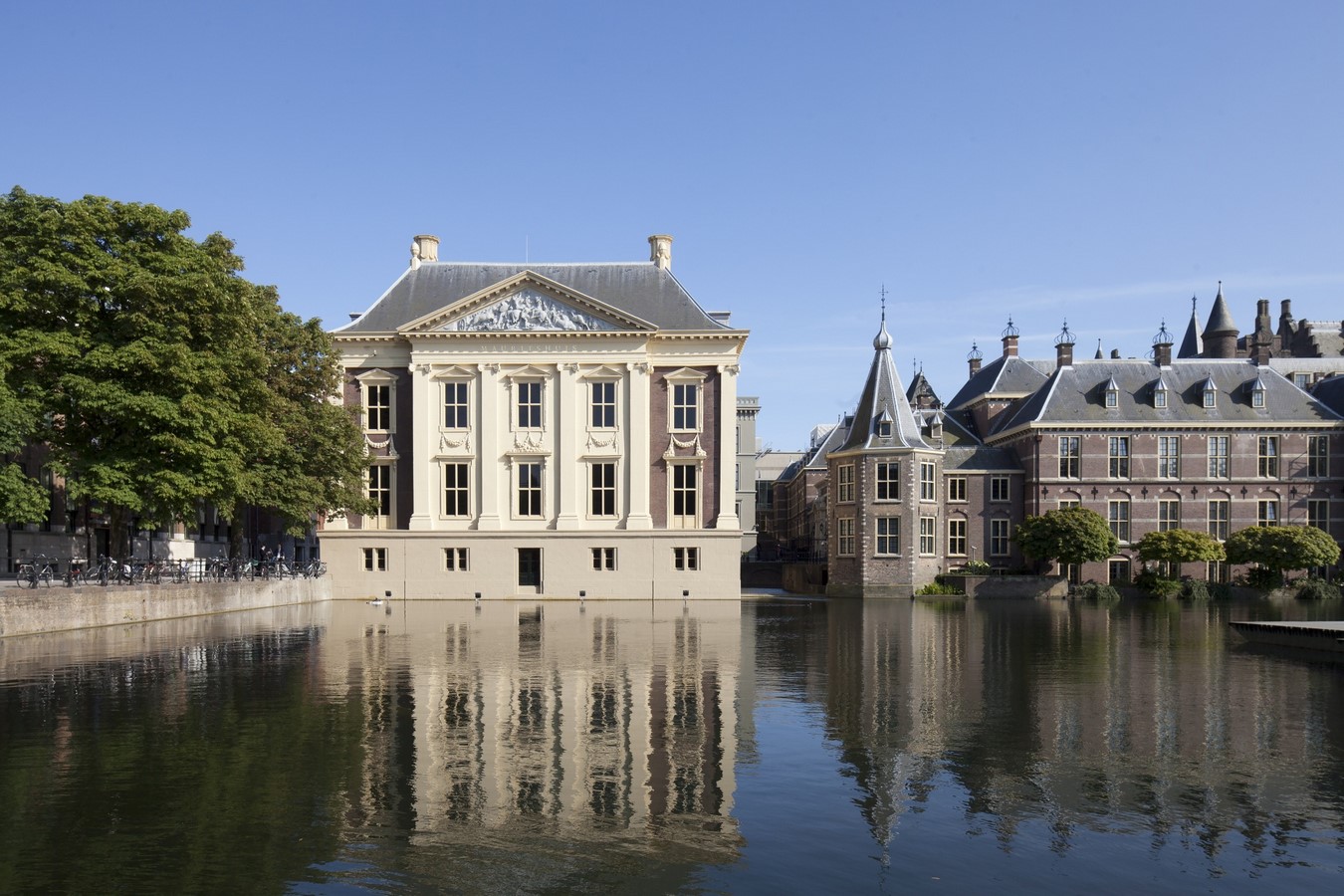
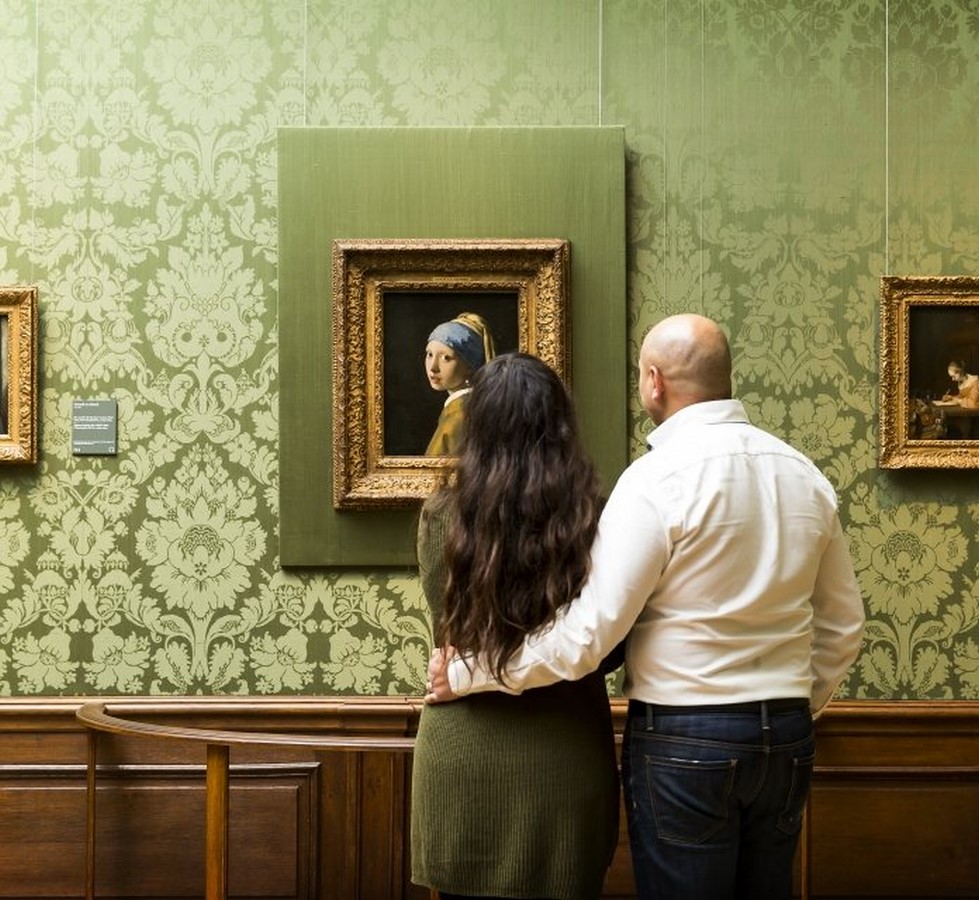
The Netherlands, formerly known as Holland, became the first republic of Northern Europe. The Dutch culture saw its golden era between 1588 and 1672. Their regional Renaissance was highly inspired by Baroque and the classical works of French architect Andrea Palladio, hence came to be known as Dutch classicism or Dutch Palladianism. The movement started as a Catholic response to the Protestant Form, as a revival of their doctrines and theology in the form of Art, architecture, and sculptures. The Baroque art sculptures expressed varied dramatic emotions of the Bible; they intended to make the spectator feel about the ongoing situation rather than speculate on the artist’s works. However, the architecture built during ‘the Dutch golden era’ and classicism exhibited two contrasting attributes. There were biblical and mythical subjects framed through landscapes, seascapes, and painted still lives, whereas typical classicist buildings strived through harmony, grandeur, and monumentality at their peak. The Dutch immortalized these characteristics through their artwork, whereas their build started to reflect more ‘austerity,’ a milder form of Calvinism.
Huygens, a poet and a theologist born to an influential Dutch Family in the Hague, developed a passion for Villas built by Palladio and houses by Inigo Jones. He then became determined to familiarize the people of his country, a newly developed republic nation, with architectural prowess and splendor through harmonious proportions in space planning and facades alongside the canals. Hence, he designed his house in the center of the Hague, with ornamented Baroque facades and austere interiors. Huygen’s interpretation of Vitruvius (Palladian grammar) came to be known as Dutch Classicism; however, he failed to apply his proportions in the design.
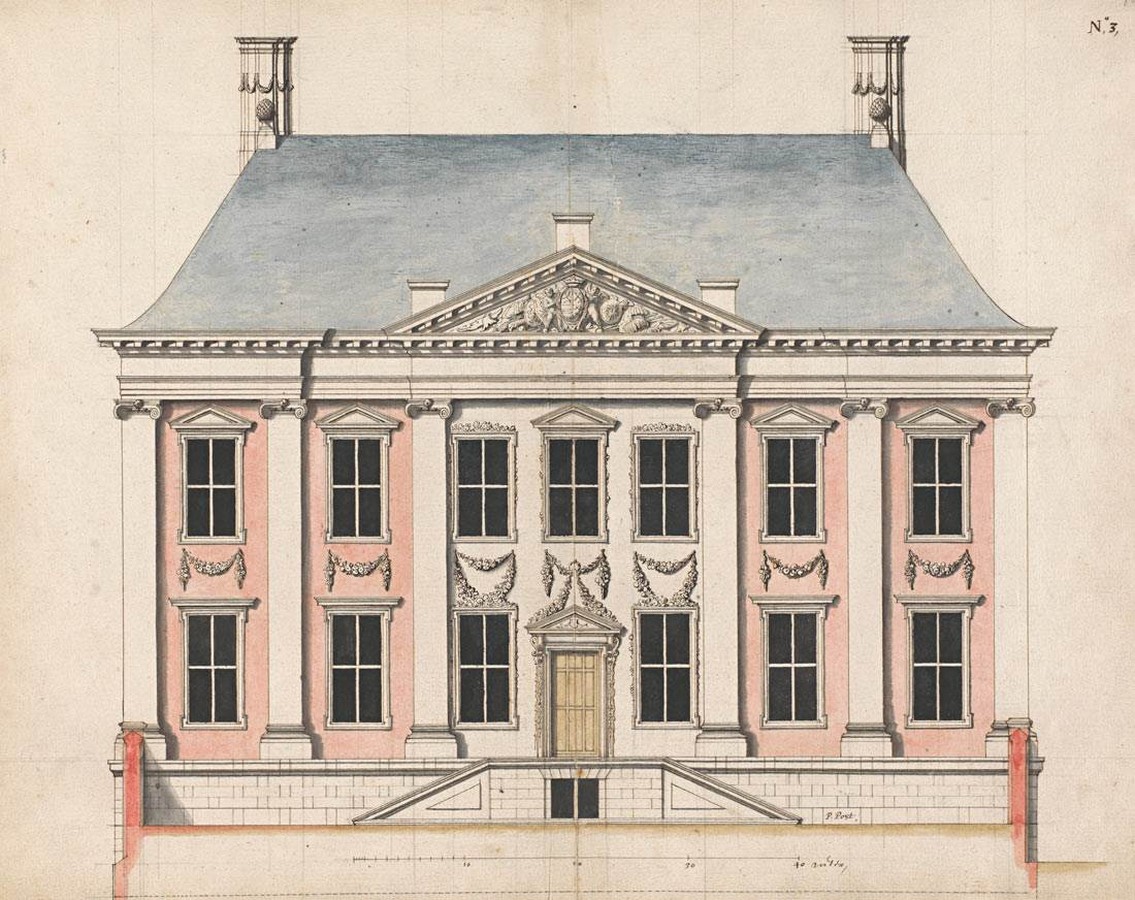
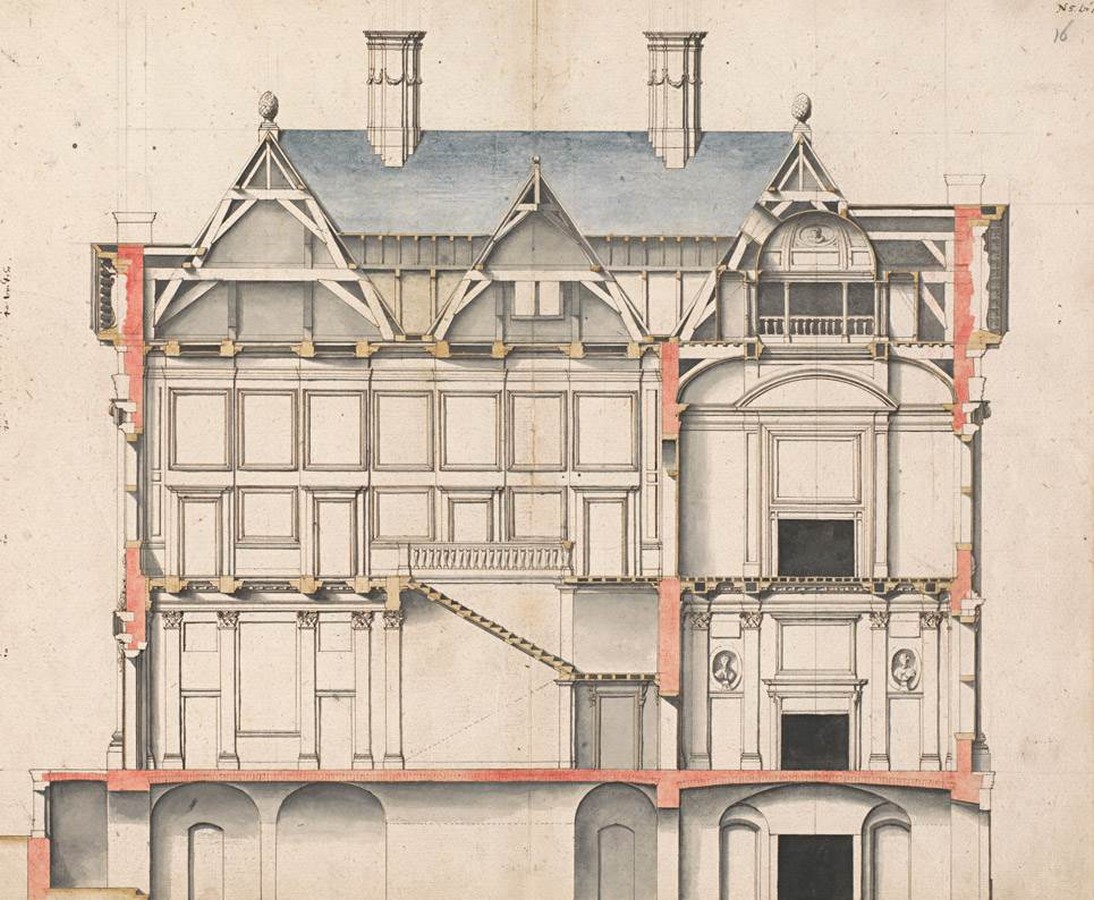
Count John Maurice, the governor of the reigning house of the Netherlands, assigned Jacob Van Campben to design his palace in the Hague. The house faces the lake pond Vijver in the center of the village. The area that accommodated the bastion was cut in half, and the Count made a tunnel that linked his garden to Huygens’ garden on the other side of the road. The facade forms a strong symmetry with the pilasters of giant Ionic orders found across the elevations and decorative classical references found in the elements like the arches, frontos, gables, and columns. The sculpture in the pediments was inspired by Hugyens, which represented Fermitas(strength), Utilas (utility), and Venustas (Beauty), three principal architectural values of Vitruvius. This continuous system of pilasters serves as a skeleton to the form, wherein if any punctures are to be made for openings or design intervention, harmony as a principle is maintained, a distinct Palladian characteristic.
The Mauritshuis plan is harmonious and closely knitted. It is a near-perfect square, reflecting rigid symmetry, with ample Voorhuis and a three-flight luxurious staircase in the center of the building. The rooms on both levels are arranged logically, with organic transitions around this monumental staircase. The Voorhuis, transitional spaces in the central part, are screened off with three large openings central to that space repetitive on both floors.
Pieter Post was tasked with designing the interiors when Maurits left for his diplomatic visit to Brazil. The large room on the floor above displays various Brazilian artifacts such as hairdressers, gemstones, feathers, shells, spears, and stuffed animals. One finds carvings detailed out intricately and paneling made of tropical hardwood across all the walls of the rooms. The bare walls above, where the paintings have been put up, are either cladded by rich brocade tapestries or painted with red and green, accentuating drama and contrast in the space. Noble materials such as gold and platinum are used in the embossed motifs of the wooden frames. The majestic Golden room, one of the exclusive rooms of the palace, holds intimate dinners, providing a regal atmosphere surrounded by paintings of Venetian artist Pellegrini over the hardwood paneled walls, with a cozy ambiance designed through the magnificent chandeliers.
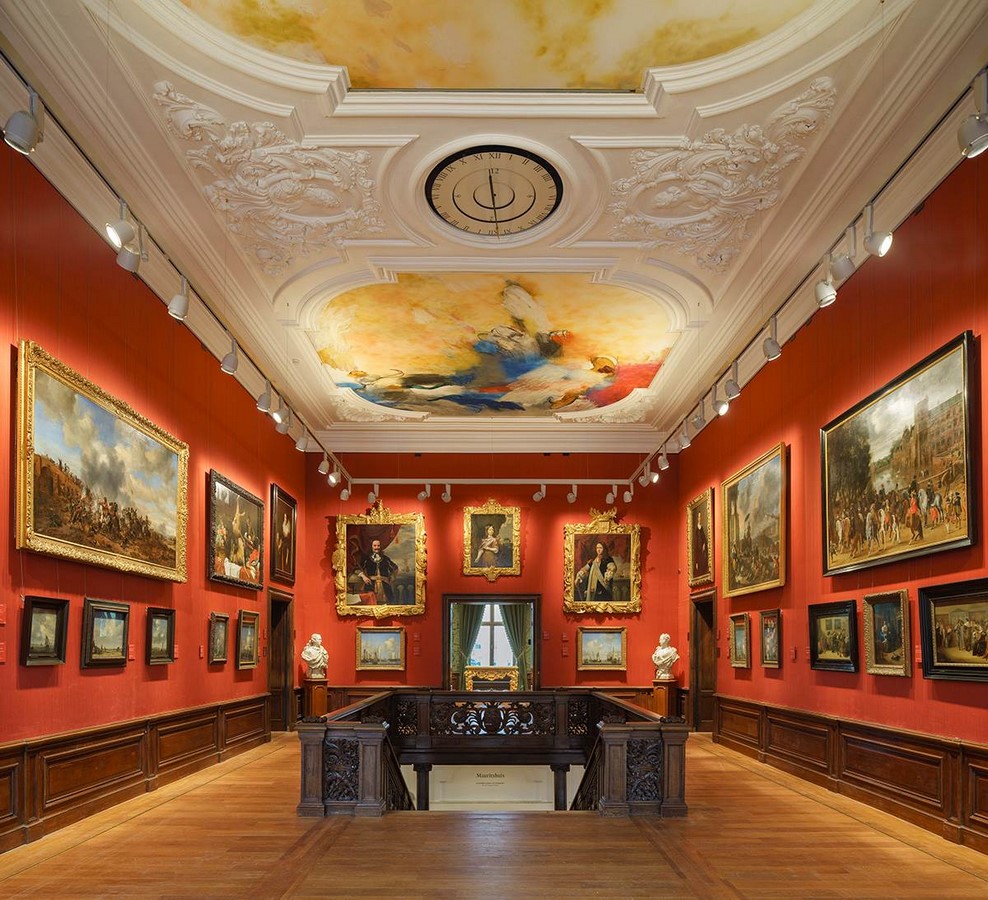
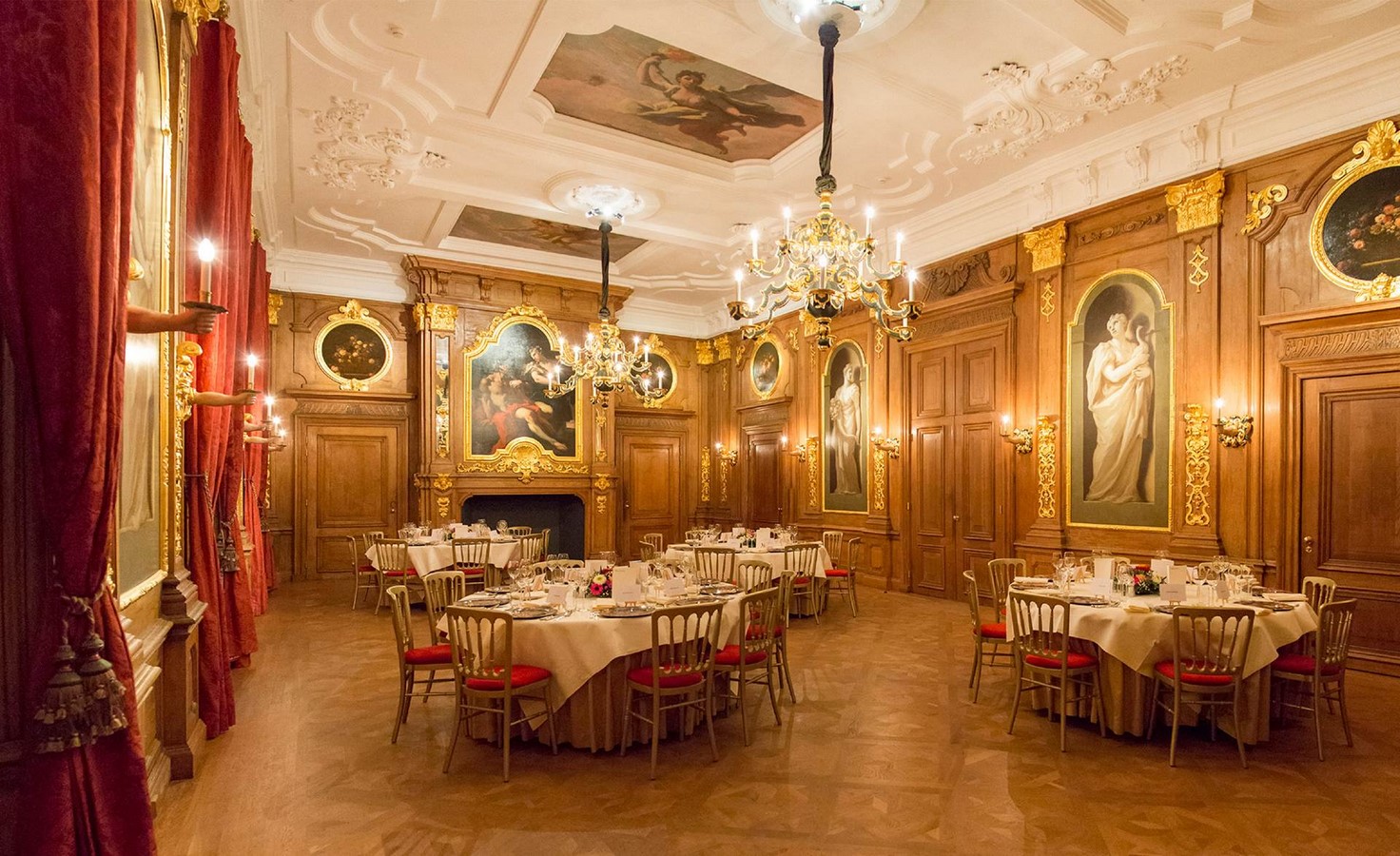
A few years after Count John’s death, the Dutch state purchased the Mauritshuis on 13 May 1820, intending to house the Royal Gallery and Royal Cabinet of Curiosities. The paintings were stolen by King William I in 1816 and were taken to Paris as spoils of war; however, after the fall of Napoleon, the Dutch soldiers brought them back to the Hague. The paintings were displayed on the top floor, and the curiosities were on the ground floor.
Paintings such as ‘Girl with the Pearl Earring’ and ‘The Night Watch’ by master artists like Rembrandt and Johannes Vermeer attracted visitors extensively from across the world. The building started to identify as one of the classic examples of modern museum design. The Museum underwent a large-scale restoration in 1982, and later, it outgrew its premises in 2012, extending its floor space to the built beside connecting through the underground foyer. Hans Van Heesvijk Architects was commissioned for this design intervention in 2009. The foyer, which lies six meters below street level and is painted light, feels spacious and lit when natural light penetrates through from all sides. One can access the foyer through a staircase or a circular cage accommodating the lift, supported by structural glass fins. Along with the new exhibition space across the street, museological facilities like a lecture theatre, brasserie, shop, cloakroom, education suite, and library have been added to the program of the new design, in trend with modern-day requirements.
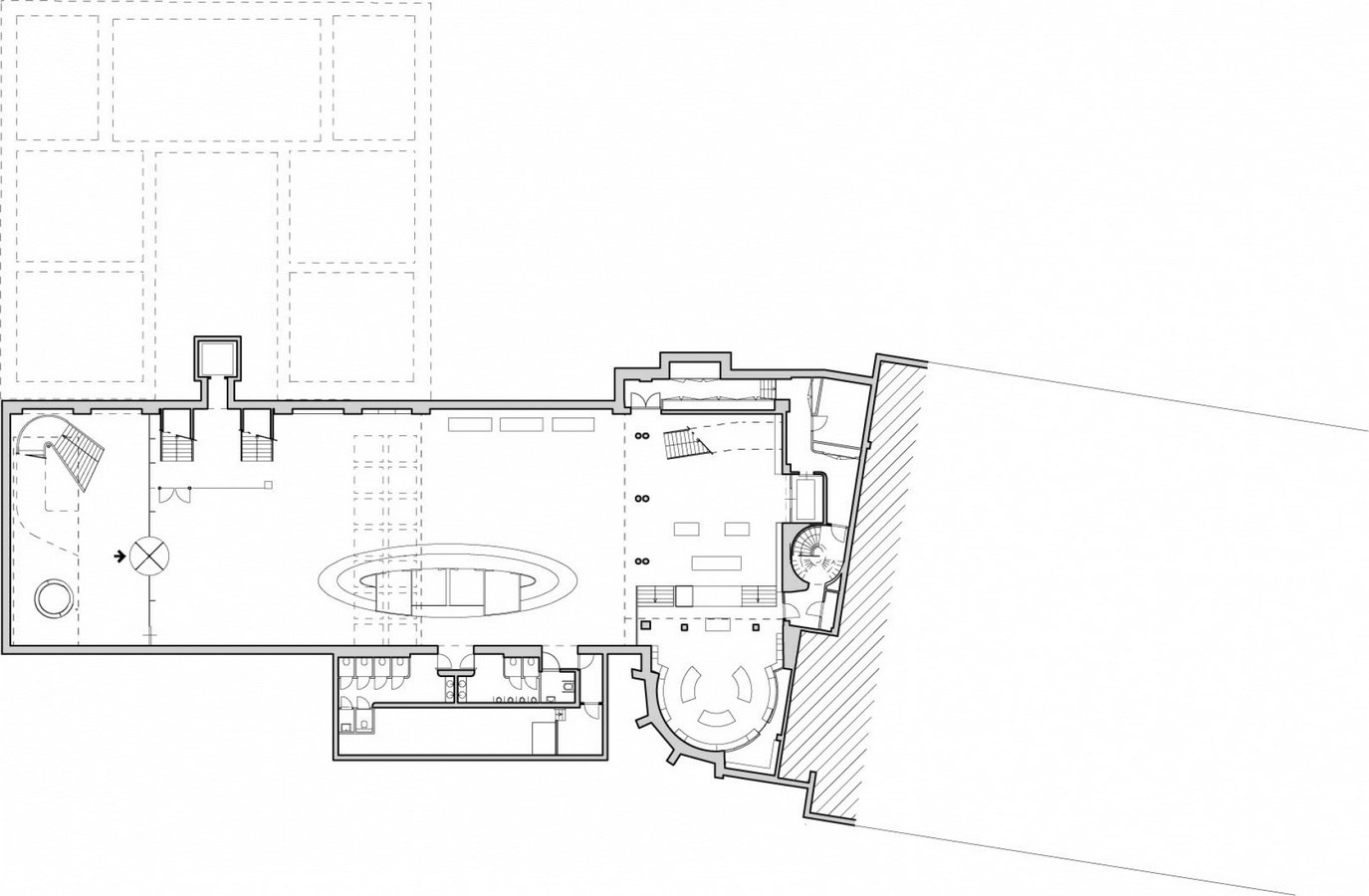
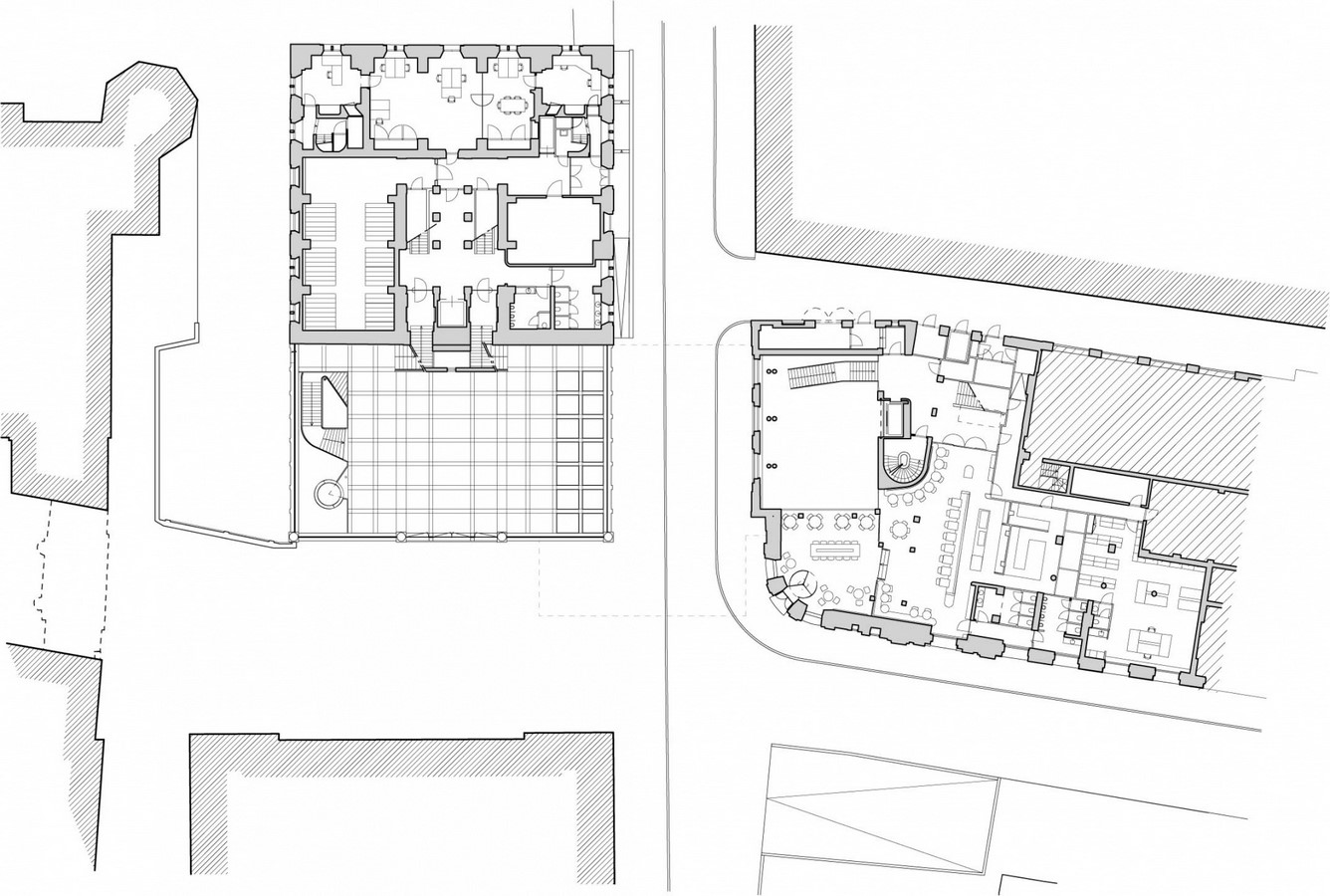
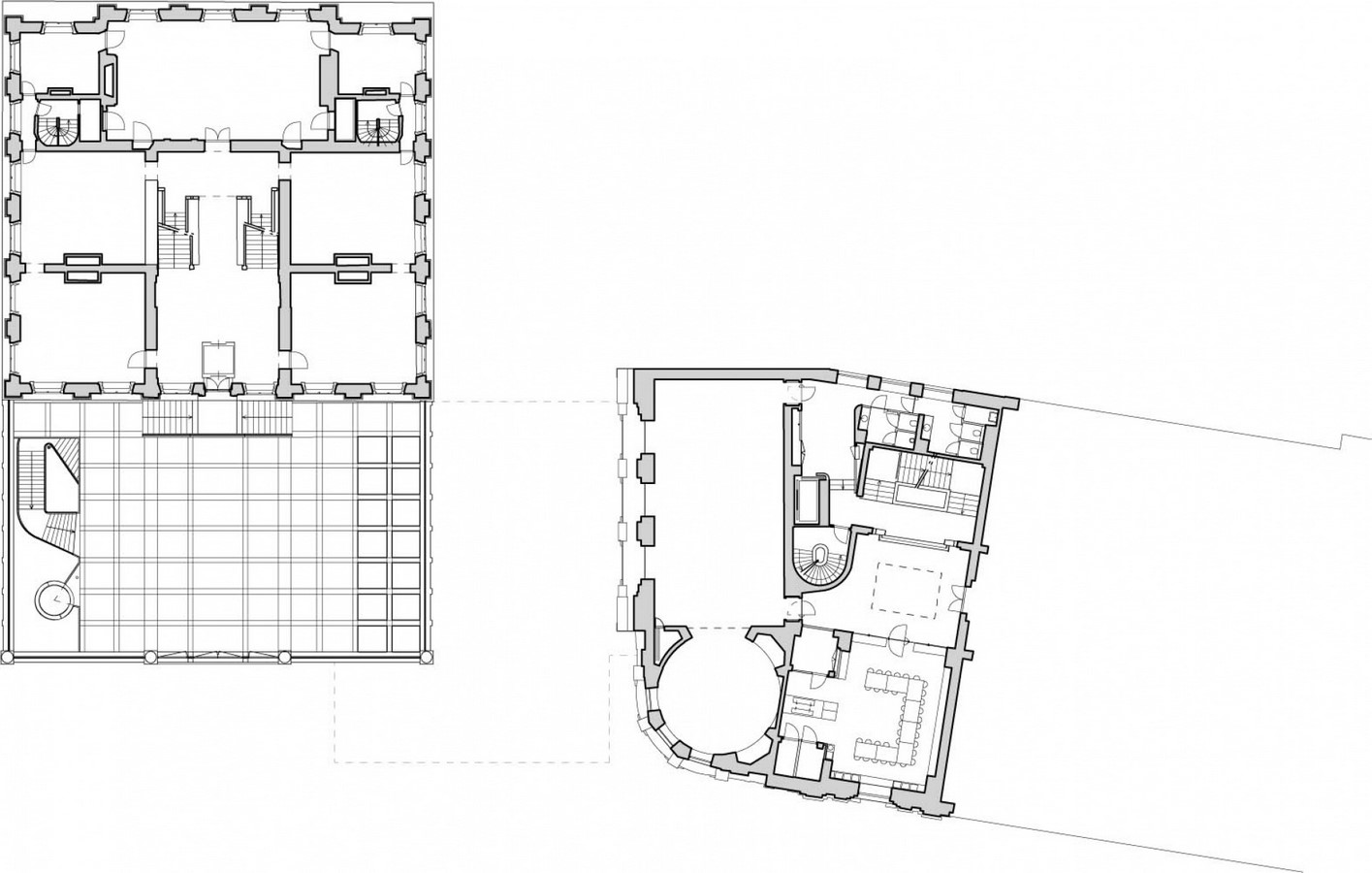
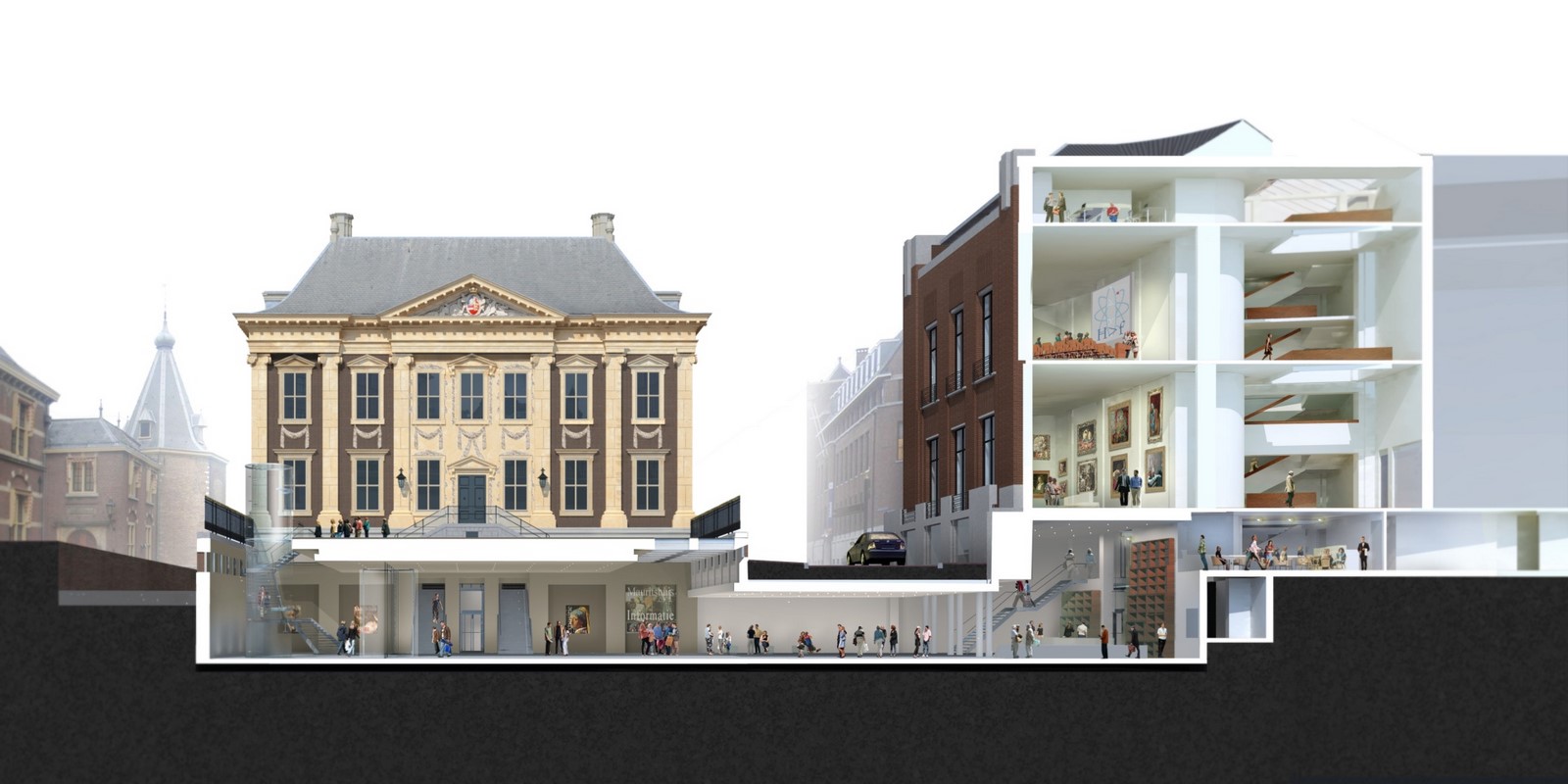

Today, the collection at Mauritshuis Museums consists of about 800 paintings, 50 miniatures, 20 sculptures, and various prints. It houses three of the thirty Vermeers: Girl with a Pearl Earring, The View of the Delft, and Diana with the Nymphs. Rembrandt’s collections reflect the technique of chiaroscuro, where he creates drama, creating contrast between dark and light using experimental brushwork in his masterpieces like ‘The Young Mother,’ ‘Simeon’s Song of Praise’ and ‘The Anatomy Lesson of Nicolaes Tulp.’ This Royal Gallery stands as a classic example of Dutch Baroque architecture at the historical and political center in the Hague.
References:
Architecten, H. van H. (no date) Museum mauritshuis, Museum Mauritshuis. Available at: https://www.heeswijk.nl/projecten/mauritshuis&lang=en (Accessed: 01 November 2023).
BluEntCAD (2023) Dutch Baroque architecture: History and characteristics, BluEnt Engineering. Available at: https://www.bluentcad.com/blog/dutch-baroque-architecture/#introduction (Accessed: 28 October 2023).
Bussels, S. (2018) “Dutch Classicism in Europe,” in Helmers, H. J. and Janssen, G. H. (eds) The Cambridge Companion to the Dutch Golden Age. Cambridge: Cambridge University Press (Cambridge Companions to Culture), pp. 308–330. doi: 10.1017/9781316771549.020.
Mauritshuis (no date) Mauritshuis | The Hague Convention Bureau. Available at: https://thehague.com/conventionbureau/en/find-a-venue/mauritshuis (Accessed: 01 November 2023).
Mauritshuis, Den Haag, Netherlands – Google Arts & Culture (no date) Google. Available at: https://artsandculture.google.com/partner/mauritshuis (Accessed: 31 October 2023).
Kuyper, W. (1980) Dutch classicist architecture. DELFT: UNIV. PR.
The Dutch economy in the Golden Age (16th – 17th centuries) (no date) EHnet. Available at: https://eh.net/encyclopedia/the-dutch-economy-in-the-golden-age-16th-17th-centuries/ (Accessed: 28 October 2023).
The Mauritshuis: The most beautiful museum in The Hague (no date) The Mauritshuis: The most beautiful museum in The Hague. Available at: https://www.mauritshuis.nl/en/ (Accessed: 29 October 2023).






















